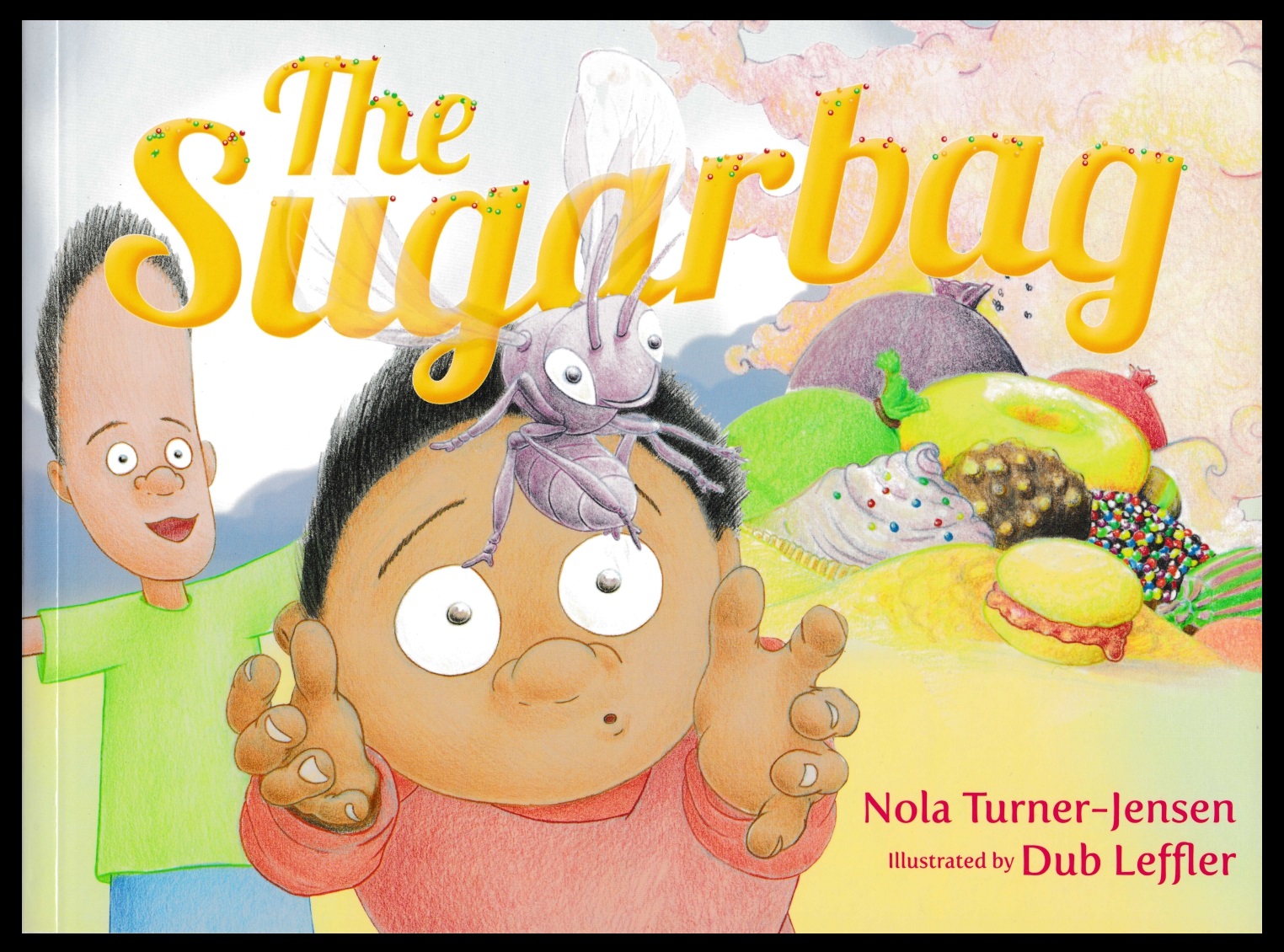Walking through the bush on their way to their grandfather’s house, a bee starts to buzz around Max and his big brother Jimmy. Max tries to flick it away but Jimmy yells at him to stop and carefully catches the bee announcing that ‘this little fella could lead us to a delicious treasure’. Max starts to imagine what sort of treasure Jimmy means, perhaps pirate treasure? But Jimmy explains it is sugarbag or ‘ngarruu’ which has Max rubbing his stomach, dreaming of a treasure trove of sweets and lollies.
Jimmy takes a piece of white fluff from Max’s toy emu and places it on the back of the bee to make it easier to follow, a trick he learned from his grandfather, and lets the bee go, saying they will have to chase it. Though Max isn’t convinced he joins the chase and they find the treasure – not as Max hopes, a pile of sweets, but rather a bee hive in an old log. He’s not impressed that they have to dig it out and runs and hides from the angry bees. But once he tasted sugarbag, Max knows he has found a treasure.
This is a humorous, excitement-filled adventure that highlights the closeness of the two brothers and the importance of Indigenous knowledge. The comedic style of Dub Leffler’s illustrations adds greatly to the humour.
The book gives a brief summary of the importance of sugarbag. It is the honey produced by native stingless bees and is a highly prized bush tucker. The use of something white or light-coloured to track the bees is a traditional method used by Australia’s First Nations people. The book includes some Wiradjuri words such as ‘ngarruu’ (pronounced ‘narr roo’), their unique word for honey, and ‘dhalay’ (pronounced ‘dull ayy’), an expression of frustration.
Nola Turner-Jensen is a Wiradjuri woman from Central West in New South Wales. Illustrator Dub Leffler is a descendent of the Bigambul and Mandandanji people of South West Queensland.

